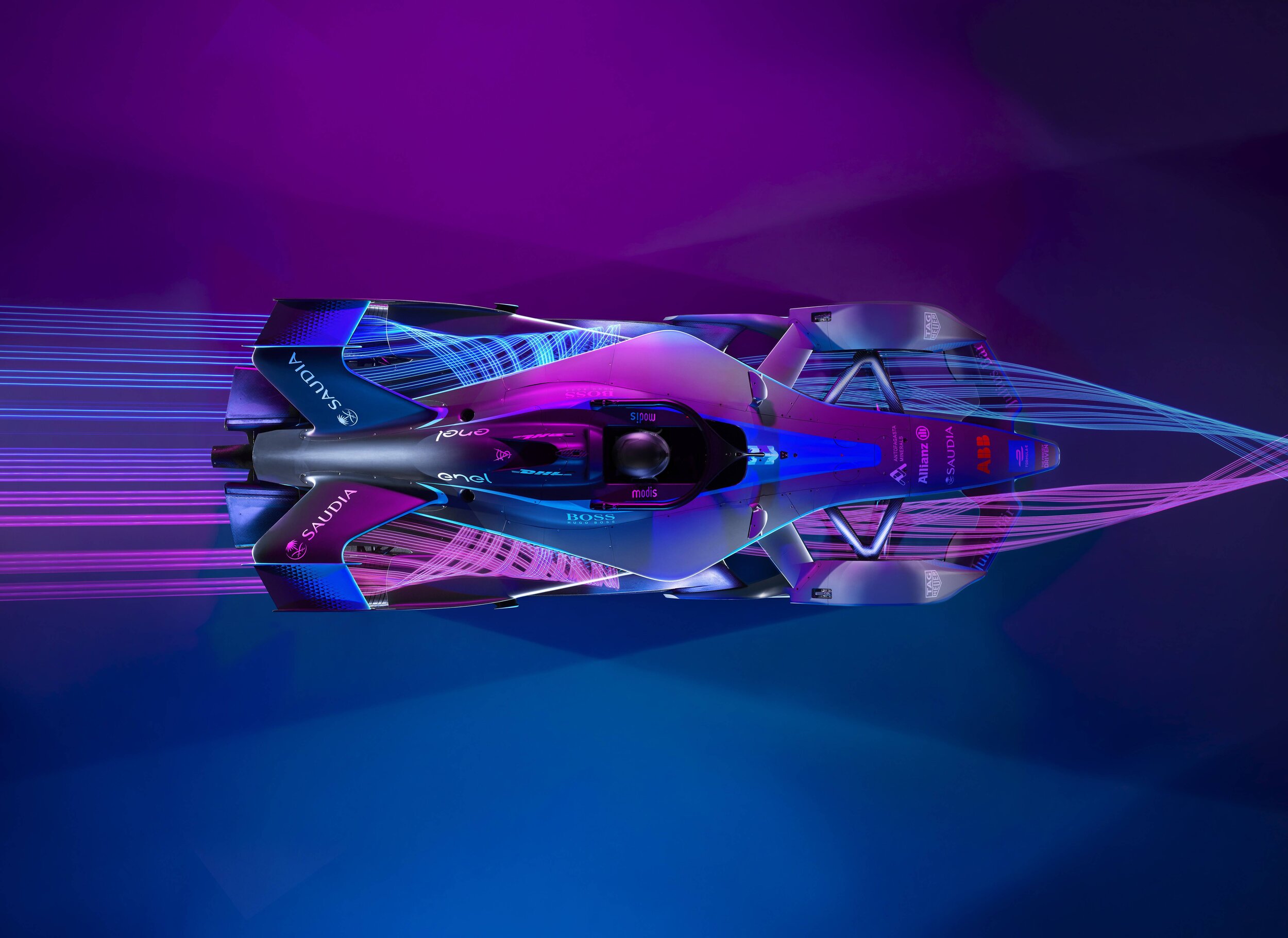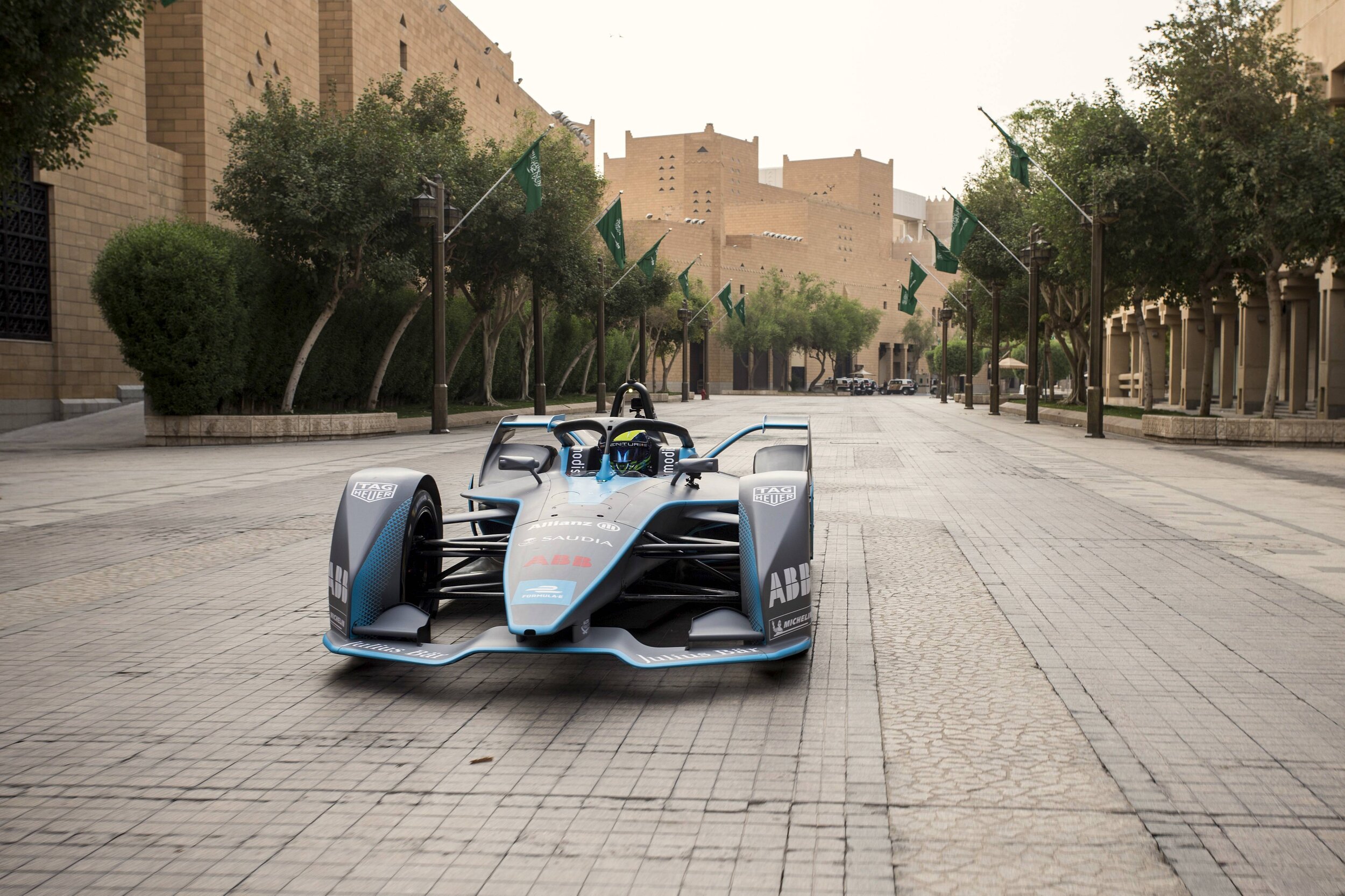What is Formula E and Why is Formula E? An Explainer
(Photo: under licence and © FIA Formula E)
The most common question still asked about Formula E is what it actually is. Nobody should feel they are left out of this fantastic form of motorsport if they haven’t watched it before, or if they don’t fully understand it - at one point or another, we were all there.
Here, then, is the Motion E guide, answering the question “what is Formula E?”, but also attempting to answer the question of why it exists, and why so many people wouldn’t do anything with their Friday or Saturday afternoon except watch it.
What is Formula E?
Formula E is a category of single-seater motorsport that features cars powered by all-electric powertrains. The championship takes place on city street circuits, which are FIA Grade Two and below. You don’t need to know what that means, but Formula One circuits are all Grade One.
Reasons why Formula E runs on city street circuits:
Because the category was devised to use as much existing infrastructure as possible, and to be accessible by large numbers of people without extensive use of fossil-fuel transport as with, say, Silverstone.
Because it discourages comparison with Formula One, which is a very different form of motorsport, the cars in which are much faster, but which also use petrol engines, and run on wide, expansive race circuits of the kind that would make for a boring Formula E race.
The point of Formula E is to provide exciting, close racing, and that is achieved as much through the confined spaces of its circuits as it is by the cars and drivers themselves.
Go on then, give us some details about the cars, just don’t get too boring
Okay. Some people believe Formula E is a “spec” (that is, all cars are the same) formula, like FIA Formula Three, or W Series. They’re wrong, because while the chassis, the Gen2, which is designed and built by a shadowy cooperative called Spark Racing Technologies (they’re on LinkedIn, but they don’t talk a lot…), is, indeed, a spec chassis, within that, teams have to either design, build and install their own powertrain (motor, gearbox, and rear suspension - front suspension is spec, but teams can bring their own dampers).
Within that powertrain, there is a reasonable amount of freedom. The whole point of Formula E, from a manufacturer point of view, has always been to transfer technological developments from the circuit to EV road cars, so, for example, the hope at Audi would be that they would be able to use some of the principles they are honing at high speed around the world, and feed them into their range of E-Tron road cars.
(Side point, there was a time when Formula One was relevant to road technology, but arguably that’s now essentially a marketing exercise for manufacturers, so Formula E is arguably the motorsport category that is pushing road tech forward the most.)
That freedom has limits, though. For example, when Nissan brought a twin-motor powertrain to Formula E in Season 5, the decision was taken by the FIA (motorsport’s governing body) and a majority of the Formula E teams to outlaw all powertrains that contain more than one motor.
This was to keep costs in check, to keep the manufacturers of the time on-side, and to ensure that there would not be an expensive technological arms race that could potentially jeopardise the sporting side of Formula E, and price smaller teams out of the sport.
Alright, tell us about the races…
Glad you asked. There are 14 races on the Formula E season calendar (at the time of going live). The full calendar can be found on the Formula E website, and the championship races on every continent, in some of the world’s most intriguing cities.
There are iconic cities like Paris, where races are held in view of landmarks like the Louvre, popular venues like Berlin, where Tempelhof Airfield is packed with locals and tourists in summer, and Diriyah, near Riyadh, Saudi Arabia, which is a city that wants to partner with Formula E to carve a new, positive, international image.
Formula E made its debut in Saudi Arabia in 2018 (photo: under licence and © FIA Formula E)
Races last for 45 minutes and one extra lap. The tricky thing is that the overall pace of the race decides how many laps are needed, so a clever driver will use the minimum amount of energy he needs to go as fast as possible. Car-swaps, which were once the main thing most people knew about Formula E, are old news, with the Gen2’s standard McLaren battery capable of powering the car for a whole race.
This means the only way drivers can take on extra charge is by encouraging regeneration, or ‘regen’, through lifting and coasting, and through energy harvesting that takes place when the driver brakes. If a driver crashes and damages his car in a practice session, the team isn’t allowed to replace the car - instead, mechanics have to work with the parts they already have, plus sanctioned on-site spares from Spark.
There are two free practice sessions, when teams try to gather as much data as they can from both cars, then qualifying decides the order in which the cars start the race - the grid - as in all other forms of motorsport. This session features four ten-minute segments for groups of drivers, separated in championship order, in batches of six.
When a group has ended, the fastest driver from that group scores a point (as of Season 6). All times are collected together, and the overall six fastest drivers from the qualifying session go through to Superpole, where the front of the grid is decided. Whoever is on pole position gets three points.
A summary of Formula E points:
1st: 25
2nd: 18
3rd: 15
4th: 12
5th: 10
6th: 8
7th: 6
8th: 4
9th: 2
10th: 1
Fastest in split qualifying group: 1
Pole position: 3
Fastest lap: 1
I’m still wondering how power usage works in a race, though.
Wonder no more! It’s said by Spark and McLaren that it takes 45 minutes to charge a Gen2 battery from 0% to 100%. This is for a battery that’s considerably bigger and heftier than what you’d find on most Nissan Leaf cars, though. That makes Formula E cars pretty heavy compared to similarly sized single-seaters, and adds a driving challenge in terms of handling.
The maximum permitted power output when a car is being driven normally is 250kw in free practice and qualifying sessions. In the race, that’s restricted to 200kw, although the sport’s governing body, the FIA, can decide to reduce or increase that as and when it wants. Drivers and teams can increase it themselves in one of two ways.
Attack Mode requires a driver to go off the usual racing line, and drive over a defined section of track, triggering the blue light on the car’s halo device, and giving the driver an extra 35kw (in Season 6) of power to use either in evading a chasing car, or in trying to catch and overtake someone they’re pursuing.
There is another, controversial, form of power boost, and that is Fanboost, which goes to the five drivers who have received the most votes on Formula E’s website and on social media. Fanboost may not be long for this world, but at this time it can still make the difference between a driver finishing first or second. Fanboost provides an extra 100kj to the car, to add up to an output which the FIA says should not be less than 240kw or more than 250kw.
Fanboost is operated and restricted by the teams, and requires great attention to detail, given that there have already been several penalties given out to drivers who were found to have overused it in races. When a driver uses Fanboost, the halo device glows purple.



